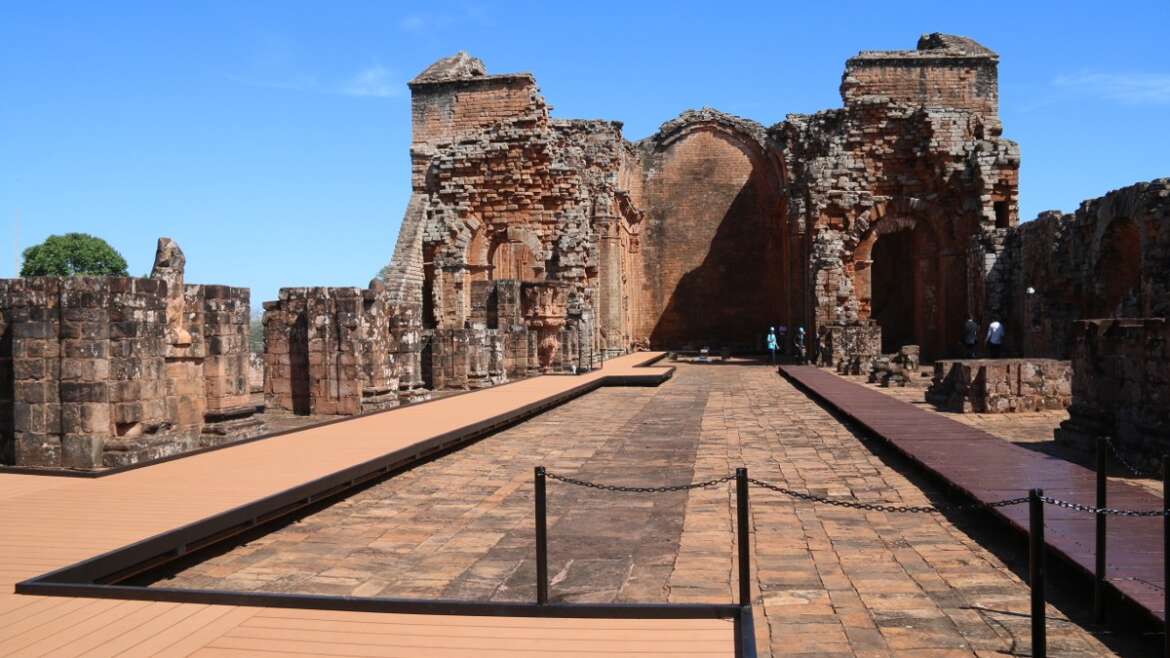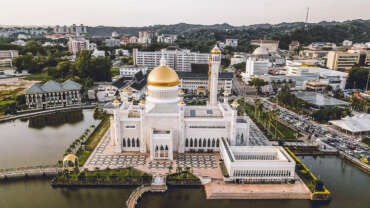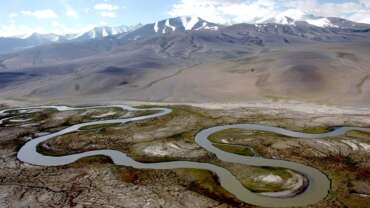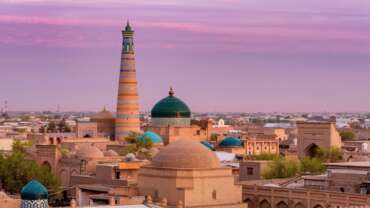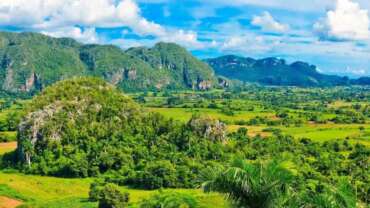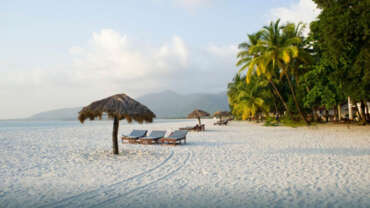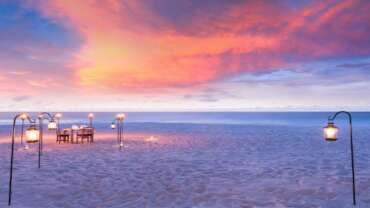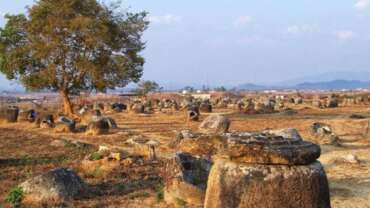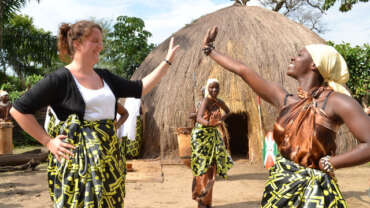Paraguay - You have to feel it!
Paraguay is a landlocked country between Argentina, Brazil and Bolivia, home to large swaths of swampland, subtropical forest and chaco, wildernesses comprising savanna and scrubland. The capital, Asunción, on the banks of the Paraguay River, is home to the grand Government Palace and the Museo del Barro, displaying pre-Columbian ceramics and ñandutí lacework, the latter available in many shops.
Earlier the Paraguay region was not much visited, but now with the upcoming tourism enhancements it is the most visited spots in the tourism industry. The best time to visit this diverse region is from April till September, as this is the peak season for tourism and also includes the festive months of Paraguay. Various Paraguay tourism packages are now available which are designed specially with different offers to entertain the tourists.
Many Paraguay tours are also available for the cooler months from May to August. July is the coldest month, so if you are planning to travel during this time them be sure to carry your warm clothes. The winters here have a different effect on the environment.
History of Paraguay
Paraguay was discovered in 1524 by the Spanish advance, Alejo García, forming the “Giant Province of the Indies”. Between the discovery and subsequent operations, the best known names at that time were Sebastián Gaboto, Pedro de Mendoza, Alvar Núñez Cabeza de Vaca, Juan de Salazar de Espinoza, Juan de Ayolas, Domingo Martínez de Irala and others who had gravitant performance in the founding forts and towns and began, in alliance with indigenous communities, a process of social conformation marked by the strength of the conquerors and the evangelizing action of the Catholic Church. The first missionaries were from the order of San Francisco de Asís, then came the priests of the Society of Jesus, the Jesuits, both evangelizers left a cultural legacy of great importance for Paraguay.
Spanish rule came to an end in 1811 with the May 14 revolution, when a group of patriots decided to cradle an independent and sovereign country.
The buildings built in the second half of the 19th century are still preserved.
The new Republic took constitutional status with the Government of Don Carlos Antonio López in 1844 and experienced surprising economic, technical and social development. At that time services such as the railroad, merchant navigation, the telegraph were established. Large and beautiful buildings were built, a shipyard and the first steel plant in America were installed.
Currently, Paraguay is a Social State of Law with a democratic regime, whose government is exercised by three powers: Executive, Legislative and Judicial. The territory is divided into 17 departments governed by a governor, a departmental board, and each district has a local government headed by a municipal mayor.
Multiculturalism makes Paraguay a peculiar and different country, in continuous evolution. With autochthonous populations of five linguistic families, Guaraní prevailing, with the presence of immigrants from various countries of the world, they contributed to the first Spanish-Guaraní mix, an extraordinary richness in cultural manifestations.
People of Paraguay
Ethnic groups
Paraguay has one of the most homogeneous populations of any South American country. The vast majority of inhabitants are almost all mestizo (of mixed European and Indian ancestry). They pride themselves on their Guaraní descent, although the admixture of European strains is prominent. About 300,000 Brazilians, many of them farmers, immigrated to the Eastern Region in the 1970s because land in Paraguay was cheaper than in Brazil. Other immigrants have come from western Europe, particularly Germany, Italy, and Spain, and from Japan, China (Hong Kong), South Korea, and Taiwan. There are about 30,000 German-speaking Mennonites in Paraguay, about half of whom live in colonies in the Chaco.
Indians make up about 2 percent of Paraguay’s population. Ethnically distinct groups include the Pai-Tavyterá, Mbyá, Aché, and Chiripá in the east and the Toba, Maskoy, Lengua, Nivaklé, Tapieté, Ayoreo, and Chamacoco in the Chaco. Other smaller Indian groups reside throughout Paraguay. Some are threatened with extinction through forced assimilation and the takeover of their traditional lands by Brazilian loggers and landless peasants. The welfare of the country’s indigenous peoples is the official responsibility of the Paraguayan Indian Institute. Many Indians also receive support from missionary groups.
Languages
As established in the 1992 constitution, Spanish and Guaraní are the official languages of Paraguay. Guaraní is spoken by nearly nine-tenths of the population, but it has only been used as a language of instruction in schools since 1996. Spanish is used almost exclusively in government and business. At least half of the population is bilingual. The constitution also recognizes other Indian languages as part of the country’s heritage.
Religion
About nine-tenths of the population professes adherence to Roman Catholicism. There is also a sizable minority of Evangelical Protestants. The constitution recognizes no official religion and emphasizes the state’s independence from the Roman Catholic Church.
Cultural Life of Paraguay
The main characteristic of Paraguayan culture is its fusion of both the Guaraní and Spanish traditions. Folklore, the arts, and literature reflect this dual origin. The country’s outstanding handicraft is the production of ñandutí lace, which is thought to represent a combination of 16th-century needle lace-making techniques from Europe with Guaraní traditions.
Daily life and social customs
Social life tends to revolve around the family. Godparents are particularly important; if parents become unable to provide for their children, godparents are expected to assume responsibility for them.
Paraguayan cuisine reflects traditional Guaraní cooking styles. Beef dishes and freshwater river fish are popular. Other typical foods are soups, often with meat, and various breads, especially chipa, which is flavoured with cheese and egg. Corn (maize) is a staple ingredient in many dishes, including sopa paraguaya, a pie made from corn, eggs, and milk; avatí mbaipy, a corn soup; and mbaipy he-é, a dessert made from corn, milk, and molasses. Beer and caña, a cane sugar spirit, are popular drinks. Yerba maté, the local herbal tea, is consumed year-round—chilled in summer, hot in winter. A common pastime is drinking tereré (a bitter tea made from the same type of leaves that are used to brew yerba maté) from a shared gourd or from a hollowed cow’s horn, or guampa, which often is beautifully carved.
Outside Asunción the pace of life is slow. Religious celebrations throughout the country are well attended; for example, thousands of Paraguayans visit Caacupé on December 8 to participate in the city’s annual celebration of the festival of the Virgin of Miracles. The Feast of St. John (San Juan Ara), on June 24, is celebrated with traditional games, one of which includes walking on hot coals. The country’s Afro-Paraguayan community at Kamba Kua celebrates an annual music and dance festival. Throughout the country on August 1 it is a tradition to imbibe carrulim, a Guaraní drink made of caña, ruda (a root plant that produces yellow flowers and is used mostly as a medicine), and lemon. Those three ingredients, according to Guaraní beliefs, bring happiness, drive away evil, and protect a person’s health. Many Paraguayans believe that the month of August brings misfortune and bad luck to those who do not drink the concoction. Herb vendors and kiosks sell carrulim in specially prepared bottles in towns and villages each August 1.
The arts
Paraguay has a distinctive musical tradition, especially of songs and ballads. Paraguayan songs, which tend to be languid and sentimental, were made popular by artists such as Los Paraguayos and Luis Alberto del Paraná in the 1950s. Typical music for dancing includes polkas, courtship dances of Bohemian folk origin, and the galopa, a variant of which is the bottle dance, so called because the dancers balance bottles on their heads. José Asunción Flores (1904–72) was the country’s most-outstanding composer and harpist. He invented the guaranía, a musical style that features haunting and melancholic melodies that encapsulate the Paraguayan identity. Feliz Pérez Cardozo and Emiliano R. Fernández are also noted for their musical compositions.
The number of books published in Paraguay increased significantly in the 1980s and particularly after the coup in 1989. Paraguay’s most-famous author is Augusto Roa Bastos, whose novel Yo, el supremo (“I, the Supreme”; 1974), based on the life of the 19th-century dictator José Gaspar de Francia, won wide acclaim.
Cultural institutions
Paraguay’s principal cultural institutions are located in Asunción. There are learned societies concerned with Paraguayan and Guaraní history and culture as well as various other societies and research institutes. The Normal School of Music, the Conservatory of Music, the National Academy of Fine Arts, and the Asunción Symphony Orchestra are major arts institutions. Paraguay has museums of ethnography, natural history, and military history as well as art galleries with collections of the work of Paraguayan artists such as Carlos Colombino and Ricardo Migliorisi.
Library services are centred in Asunción. The largest collections are in the National Library and the National Archive as well as in the private Our Lady of the Assumption Catholic University.
Asunción, Capital of the Country
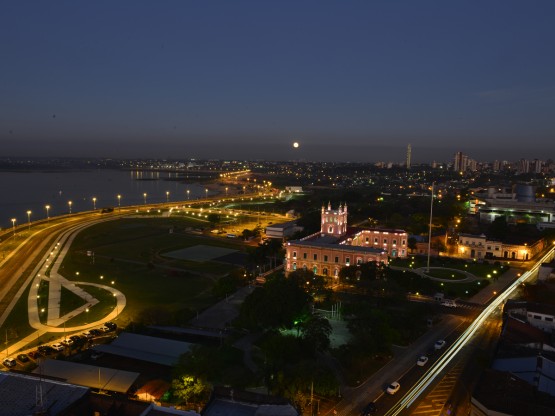
Asunción, known as “Ibero-America’s Green Capital” due to the abundant greenery throughout its streets and gardens, successfully combines the beauty of its colonial-style buildings with its imposing infrastructure worthy of a grand metropolis.
The capital is also referred to as the “Mother of Cities”, a historical name honoring the fact that it was from there that numerous expeditions were made and these resulted in the foundation of other new cities. The terrain on which it stands is identified for its seven hills. The capital of the Republic of Paraguay offers luxurious hotels of both national and international chains to accommodate visitors. When in Paraguay, you simply must explore the historic downtown area, the Metropolitan Cathedral, the Palace of the López, the National Pantheon of Heroes and the various museums that portray the country’s history, both past and present. Whichever way you look at it, Asunción is an incredibly charming city.
Its nightlife is presented in a variety of interesting options, such as pubs, bars, nightclubs, restaurants, cafés, cinemas and theaters, all open for the enjoyment of tourists. As a visitor, you can also savor a cuisine characterized by countless delicious flavours presented in many diverse dishes and delicious desserts, including the traditional dishes, which is prepared with fresh, natural products.
In the outskirts of Asunción you can find several tourist attractions, such as Areguá, known for its art in clay; Luque, where silver is molded into beautiful jewelry; Itaguá, the birthplace of the famous weaving technique known as “Ñandutí”; Yaguarón, which is part of the Franciscan Road and stands out with its wondrous church with its altarpiece and polychrome wood carvings; and several other beautiful nearby cities like San Bernardino, Ypacaraí and Caacupé, all of which offer delightful places worth exploring.
The city’s ideal for conferences, conventions, and international events because of its world-class infrastructure and the added bonus of the human warmth and hospitality of the Paraguayan people.



